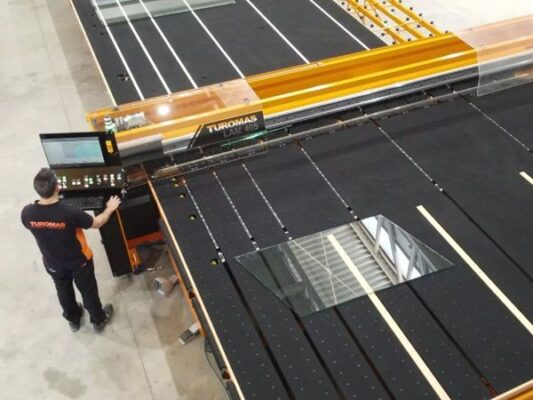Glass, one of the most popular storage and packaging product and the easiest commodity to recycle and reuse, conserving both natural resources and landfill space.
The world glass industry generates yearly revenue of USD 75 billion, with leading exporters being the US, France, Japan, China, India and Germany. Glass is an inevitable component of the Indian economy, where it accounts for more than 21 million metric tons of consumer products. The glass industry in India is quite old and well established. It remained largely a cottage industry for a long time. In recent years, the industry is transforming and developing from rudimentary mouth-blown and hand working processes, the industry has evolved to adopt modern processes and automation in a large way. Since Prehistoric period (2nd BC), People of Mohenjo-Daro & Harappa through trade contacts with Ancient Sumer glass fusion etc. Glass Industry started flourishing in India post the 17th century. So we have a question now, how is Information Technology transforming the Glass Industry today? In fact, Information Technology plays a crucial role in the transformation of the Glass Industry. Process improvements encompass a variety of enhancements to equipment, raw materials, operating procedures, and production systems. Information Technology enables to increase throughput, lower costs, improve quality, and enable new finishing techniques. Sensors and other detection tools that measure Technical Article and report manufacturing conditions are the building blocks of process control systems. They enable operators to improve efficiency and optimize performance by providing realtime data on conditions in the glass melt and the combustion atmosphere in the furnace and allow them to make appropriate adjustments. Information Technology enables manufacturers to optimize and automate glass production and fabrication. It involves measuring and monitoring actual process conditions throughout glass melting and forming, analyzing real-time process data to identify potential problems, and automatically adjusting process variables toward optimal conditions. Upsets to the production process can affect product quality. Technological advances in glassmaking over the last 25 years has helped reduce the energy per pound of glass being “pulled” through the furnace along with improving glass quality and reducing cost. Tools enabled manufacturers to design a better, user-friendly end product. Advancement in technology helps them to produce various products as per market demand. Information Technology helps manufacture to analyze the market and on the basis of analysis, they can know about product demand. It also helps them to keep track of their sales, profits and market trends. Information Technology helps Glass stakeholders to build brand identity, increase the brand value of their product and make customers worldwide in a fraction of cost and time. Information Technology leads the Glass Manufacturing into full automation and less human resources required. The term “Lights-out manufacturing” is used for factories that operate autonomously with less human presence. These factories don’t require lighting and can consist of several machines functioning in the dark. Chinese e-commerce company JD.com is the role model for future Glass manufacturing. (Chinese e-commerce company JD.com is a great example of this) The industrial automation and digitization are being labelled Industry 4.0, as in the fourth industrial revolution. Information Technology revolutionized the way we live. Information Technology transforming the Glass Industry with new technologies and automation. The 3D printing is now making waves in glass manufacturing. The Internet of Things (IoT) established the interconnectivity between the manufacturing plants to a whole new level though, with machines, sensors, and humans, these stakeholders are working closer than ever before. Better connectivity means better communication, faster response times, and greater efficiency across the board. In the future manufacturing • 2 process, augmented and virtual reality could play a greater role in R&D, and could effectively “abstract away” the desktop PC for industrial designers, possibly eliminating the need for 3D printed physical models. The Blockchain will manage the disparate inflows to a factory. With blockchain, the supply chain of products from manufacture to sale, the transactions can be documented in a permanent decentralized record which leads to reducing time delays, cost and human errors. There is more, Next-Level Robotics which replace approximately 10 humans into one robotic arm, the example can be seen with Dongguan factory, China where 650 humans replaced with 60 robotic arms. Robotics arms will help to do odd or monotonous jobs very fast, improve production supply, reduce the time and cost of making end products. Without Information Technology, The Glass Industry faced many challenges such that Slow Production which affects industry growth and decreases customer demand. High cost and unfinished products as earlier technologies required stretching the molten glass by spinning, blowing or pulling it. As a result, inhomogeneities were originated, introducing distortions. Without Inventory management system we weren’t tracking the product quantity and without any quality management system, we weren’t able to track the quality of the product. There was no room of further development in Glass Industry. IT opens a door of further Research and development in Glass Industry.
Co-Authors:
Zeeshan Alam and Shalini Yadav
“Information Technology helps manufacture in analysing the market and on the basis of analysis, it is possible to estimate product demand. It also helps manufacturers to keep track of their sales, profits and market trends. Information Technology helps Glass stakeholders to build brand identity, increase the brand value of their product and make customers worldwide in a fraction of cost and time.
Zeeshan Alam–
E-mail: er.zeeshanalam.sgi@gmail.com
Shalini Yadav–
E-mail: stushalini@gmail.com










